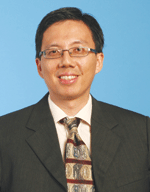 Dilip Thakore posed some questions to Toh Wee Khiang, executive director (human capital) of the Singapore Economic Development Board (EDB). Excerpts of his e-mailed responses.
Dilip Thakore posed some questions to Toh Wee Khiang, executive director (human capital) of the Singapore Economic Development Board (EDB). Excerpts of his e-mailed responses.
What is the role that EDB plays in the development of education in Singapore? How satisfied are you with the Global Schoolhouse initiative of 2002?
In the early days of industrialisation after Singapore’s independence in 1965, the main challenge before EDB was to create jobs. Therefore our immediate task was to ensure that the workforce developed basic vocational and technical skills to support our then labour-intensive manufacturing activ-ities. By partnering with multinational companies including the Tata Group of India, Rollei of Germany and Philips of Holland, we established Joint Government Training Centers which helped build up a pool of trained technical manpower. So attracting foreign educational providers to Singapore is not a new initiative for us.
The Global Schoolhouse initiative was launched by EDB in 2002 to invite the best universities abroad to develop Singapore as a world-class education hub offering a diverse and distinctive mix of local and international quality education services. This initiative has been successful with higher education institutions such as INSEAD, Digipen Institute of Technology, S.P. Jain Institute of Management & Research, among several other world-class institutions establishing campuses and close links with our higher education institutions. Therefore, today Singapore enjoys a strong brand name in education.
What are the benefits that have accrued to Singapore from allowing foreign universities to establish campuses in the country?
Right from 1965 when Singapore became independent, the government was convinced that Singapore’s future was dependent on attracting business, professional and academic talent from around the world. Our positioning of Singapore as a ‘home for talent’, acknowledged talent not merely as an input factor, but as a key driver of economic growth.
Therefore to attract business, professional and academic talent we had to also attract excellent education institutions to Singapore to help us develop our institutions, and to transform Singapore into a talent hub for the present and the future. It was for this purpose we launched the Global Schoolhouse initiative in 2002 to attract the world’s best institutions to Singapore. This initiative has not only helped us to upgrade our own universities and education institutions but also to attract, develop and retain talent.
Today, Singapore offers students of different cultures and nationalities the opportunity to learn together and have easy access to other countries in the region through academic excha-nges. Also faculty members based here have the opportunity to work with diverse industries, which has enabled close academia-industry collaboration.
Some people say that allowing foreign universities free entry drives up tuition fees and creates flight of faculty. What’s your comment?
We see private and public universities as complementary institutions offering rigorous study programmes to local and international students. Faculty members based in domestic and foreign universities here have opportunities to interact and benefit from cross-learning and academic collaboration, ensuring continuous upgrading of quality.
With respect to tuition fees, we believe the market will ultimately determine what are acceptable tuition fees. The key challenge before us is to continually ensure that good quality globally-benchmarked education services are available in Singapore.